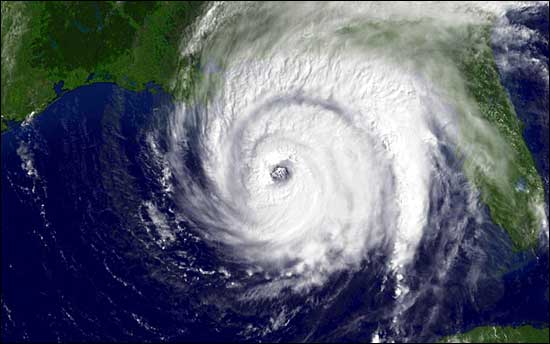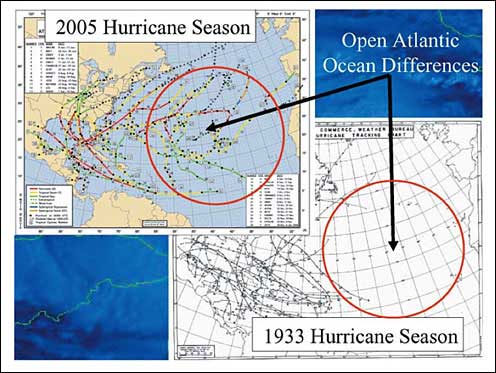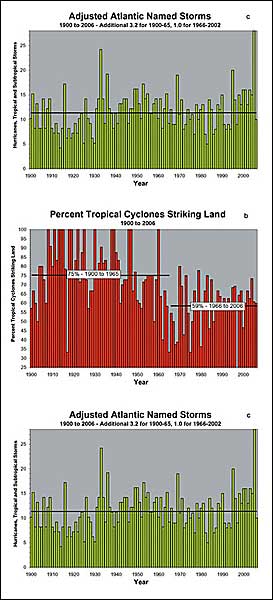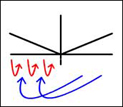A Reexamination of Climate Change Issues
”Counting Atlantic Tropical Cyclones Back to 1900”
November 18, 2009

Hurricanes are proven to not be strengthened by global warming.
This article contains excerpts from an article by Chris Landsea which was published in May of 2007, showing that the number of hurricanes occurring in recent decades is no higher than during the first half of the 20th century, contrary to previous reports which did not use accurate means of recording historical hurricane activity.
Download the original PDF article.
"The Atlantic is the one tropical cyclone basin that has quantitative records back to the mid-nineteenth century for the whole basin (i.e., North Atlantic Ocean, Caribbean Sea, and Gulf of Mexico) [Jarvinen et al., 1984; Landsea et al., 2004]. Mann and Emanuel [2006] used this dataset to find a positive correlation between sea surface temperatures and Atlantic basin tropical cyclone frequency for the period of 1871-2005. Likewise, Holland and Webster [2007] analyzed Atlantic tropical cyclone frequency back to 1855 and found a doubling of the number of tropical cyclones over the past 100 years. Both papers linked these changes directly to anthropogenic greenhouse warming. However, both analyses, with no indication of uncertainty or error bars, presumed that tropical cyclone counts are complete or nearly complete for the entire basin going back in time for at least a century. This article will show that this presumption is not reasonable and that improved monitoring in recent years is responsible for most, if not all, of the observed trend in increasing frequency of tropical cyclones."
..

Fig. 1. Track maps of the Atlantic hurricane seasons of 2005 and 1933, the two busiest hurricane years on record for tropical cyclone frequency. The circles highlight large differences in activity that occurred over the open Atlantic Ocean.
(a) The 1900-2006 record of number of tropical cyclones in the Atlantic basin, stratified by those that struck land (e.g., as a tropical storm, subtropical storm, or hurricane) verses those that stayed over the open ocean. The solid line is the 1900-2006 long-term mean of 9.2 per year.
(b) Percentage of all reported tropical storms, subtropical storms, and hurricanes that struck land.
(c) A bias-corrected time series of tropical storms, subtropical storms, and hurricanes to take into account undercounts before the advent of geostationary satellite imageery in 1966 and new technology available since about 2002. The adjusted 1900-2006 long-term mean is 11.5 per year.
View a larger detail of this image >>
".. As one goes back further in time, the numbers of ships and shipping lanes decreases and fewer people live in the tropical and subtropical coastal regions. These factors make it increasingly likely that some tropical cyclones would not be counted the farther back in time examined."
..
"... Thus large, long-term ‘trends’ in tropical cyclone frequency are primarily manifestations of increased monitoring capabilities and likely not related to any real change in the climate in which they develop..."
Article Tree
| A Reexamination of Climate Change Issues |
| Section Directory: An Examination of the Effects of a Warming Climate |
| ”Counting Atlantic Tropical Cyclones Back to 1900” |









